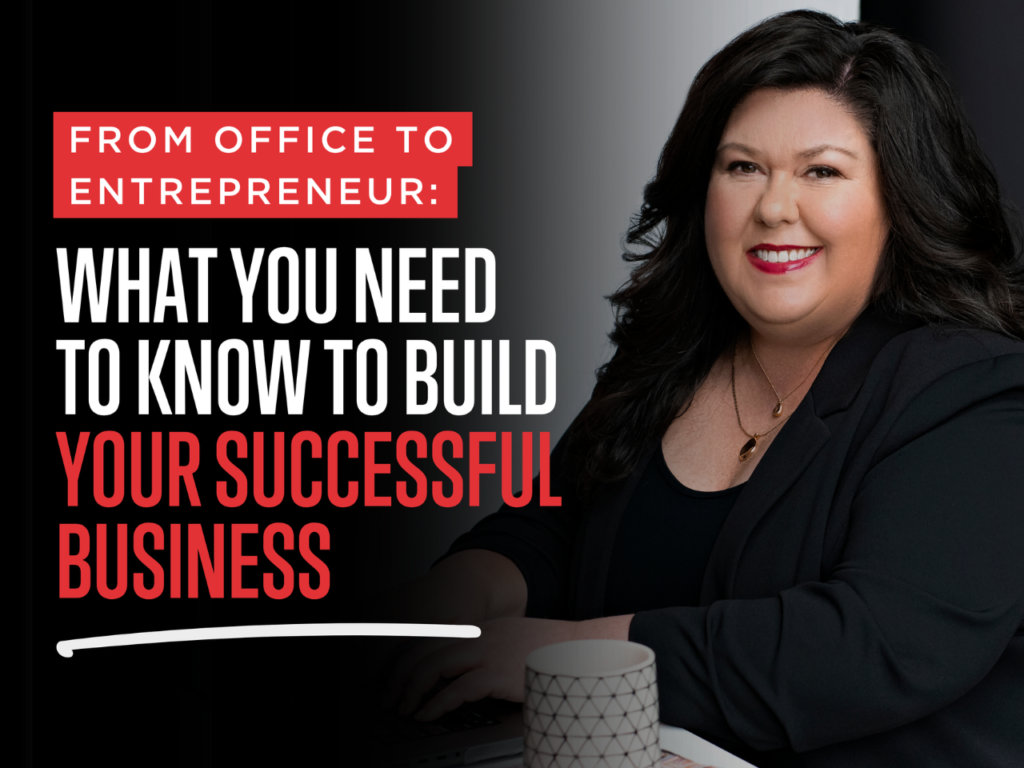The entrepreneurial journey is a road paved with an equal measure of excitement and uncertainty. For aspiring business owners, the prospect of starting your own business is often a daunting one, filled with questions of where to begin, what to prioritize, and how to ensure longevity in a competitive market. However, with the right roadmap and a solid understanding of the fundamental principles, the path from business inception to success becomes much clearer to navigate.
In this detailed guide, we will unravel the key steps and strategic moves that can transform your entrepreneurial dreaming into a well-founded reality. Whether you’re a first-time entrepreneur looking to carve a niche in the industry or a seasoned professional ready to launch your next big idea, this extensive manual is designed to equip you with the insights and knowledge to stand out and thrive in the business world.

Understand Your Ideation Phase
Every business starts with a seed—a unique idea that could address a need, solve a problem, or simply innovate a process. However, not every idea is destined for marketplace success. To ensure your business concept has legs, it’s essential to engage in a robust ideation phase that includes:
- Market Research: Investigate the current market trends, consumer demands, and competitor landscapes. This intelligence will help you refine your initial concept and shape your business model to align with real-world opportunities.
- Idea Validation: Test your idea through surveys, focus groups, and prototype feedback. Seek validation from potential customers to gauge interest and gather critical insights that could refine and validate your proposition.
- Feasibility Study: Assess the economic, legal, and technical feasibility of your idea. Are there any legal barriers to entry? Does your idea require technology that doesn’t yet exist? A feasibility study can save you from investing time and resources into a dead-end concept.

Develop a Business Plan
A comprehensive business plan is the blueprint for your enterprise. It not only clarifies your vision but also attracts potential investors and provides direction for your operations. The plan should encompass several key elements:
- Executive Summary: A succinct overview of your business idea, outlining the need it fulfills, the target market, and the unique value proposition that sets you apart from competitors.
- Business Overview: Dive into the details of your business, including the company’s mission and vision, its legal structure, and the location of operations if applicable.
- Market Analysis: Provide an in-depth analysis of your market, including size, demand and growth, segmentation, competition, and regulatory environment.
- Organizational Structure: Identify the roles and responsibilities of your key team members or potential hires. Detail any operational milestones, such as the rollout of products or services.
- Sales and Marketing Strategy: Lay out how you plan to attract and retain customers and your pricing and promotional strategies.
- Funding Request: If you’re seeking investment, precisely state the amount required, how it will be used, and what investors can expect in return.
- Financial Projections: Develop detailed financial forecasts for the next three to five years, including income statements, cash flow statements, and balance sheets.

Choose the Right Business Structure
The structure you choose for your business will have legal and financial implications, so it’s crucial to select the one that best suits your long-term goals. Common business structures include:
- Sole Proprietorship: A business owned and operated by one person. It’s the easiest business structure to set up and carries the least regulatory burden.
- Partnership: A formal agreement between two or more entities to manage and operate a business and share its profits.
- Limited Liability Company (LLC): A legal entity that offers limited liability protection to its owners and allows for pass-through taxation.
- Corporation: A separate legal entity owned by shareholders. It offers the strongest protection against personal liability but is more complex to set up and operate than other structures.

Secure Financing
Capital is the lifeblood of any startup, and securing the right type of financing is critical for getting your business off the ground. There are various options for financing, each with its pros and cons:
- Bootstrapping: Funding your business with personal savings or operating revenues. This allows you to maintain full control over your business but may limit growth.
- Debt Financing: Borrowing money from a financial institution or individual lenders. This method requires repayment with interest but doesn’t dilute ownership.
- Equity Financing: Selling shares of your company to investors in exchange for capital. Equity financing doesn’t require immediate repayment but does lead to a loss of ownership.
- Grants and Subsidies: Under certain conditions, your business might be eligible for grants or subsidies from government or non-profit organizations for specific projects.
- Crowdfunding: Raising small amounts of money from a large number of people, typically via the internet. Crowdfunding fulfills both financial and marketing purposes but it could be time-consuming and may not be reliable for substantial funding.

Build Your Brand
A strong brand is more than just a logo; it’s the promise to your customers of the experience they can expect from your products and services. Brand development should include:
- Brand Identity: Create a visual representation of your brand, including a memorable logo, colour palette, and brand guidelines.
- Brand Voice and Messaging: Develop a consistent tone and style for all your communications that reflect your brand’s personality and resonate with your target audience.
- Target Audience Definition: Identify and understand the demographics, psychographics, and behaviours of your ideal customers.
- Brand Positioning: Determine how you want your brand to be perceived in the market and set yourself apart from competitors.

Establish Scalable Operations
In the early stages, it’s all about establishing scalable operations that can accommodate growth as your business expands. This involves:
- Implementing Efficient Processes: Streamline operations and identify key performance indicators to track progress and efficiency.
- Investing in Technology: Choose scalable solutions to support operational needs as your business grows.
- Developing a Strong Supply Chain: Secure reliable suppliers and distributors to ensure your products and services can meet demand.
- Customer Service: Set up systems and processes to provide top-notch customer service from day one. Happy customers are your best marketing tool and can be a significant source of repeat business and referrals.
Launching and Marketing Strategies
The success of your launch and initial marketing efforts can set the tone for your business’s future. Consider these strategies to make a splash:
- Launch Plan: Develop a comprehensive launch plan that includes marketing, sales, and distribution strategies. Consider a soft launch to test the waters and gather feedback from early adopters.
- Digital Marketing: Leverage the power of the internet and social media to build brand awareness, generate leads, and drive sales. Content marketing, social media advertising, and search engine optimization (SEO) can all play a crucial role in your marketing mix.
- Traditional Marketing: Don’t overlook the value of traditional marketing channels, such as print, radio, and TV, especially if they reach your target audience effectively.
- Public Relations: PR can be a powerful tool in building credibility and increasing visibility. Consider online PR through press releases and influencer partnerships.

Foster a Positive Company Culture
Your company culture is the collective personality of your organization, influenced by its vision, values, mission, and people. A positive company culture:
- Improves Job Satisfaction: Fostering a culture where employees feel valued and engaged leads to higher job satisfaction and, consequently, increased productivity.
- Attracts Top Talent: A strong company culture is a magnet for top talent who are aligned with your business’s values and mission.
- Reduces Turnover: Employees are less likely to leave a workplace where they feel valued, resulting in lower turnover rates and cost savings.
- Enhances Customer Experience: Happy employees are more likely to deliver exceptional service, positively impacting customer satisfaction.
Compliance and Legal Considerations
Compliance with laws and regulations is non-negotiable in business. It’s essential to:
- Understand Your Industry’s Regulations: Each industry has specific regulations that businesses must adhere to. Understanding and staying current with these laws is crucial.
- Obtain Necessary Permits and Licenses: Depending on your business activities and location, you may need various permits and licenses. Ensure you have all the necessary paperwork before launching.
- Protecting Intellectual Property: Trademarks, copyrights, and patents can protect your business’s intellectual property. It’s important to secure these early on to prevent others from using your ideas or concepts without permission.

Measure and Adjust
After launch, your business will enter a phase of continuous improvement, also known as the “measure and adjust” cycle. This entails:
- Monitoring Key Metrics: Regularly review financial metrics, customer satisfaction, employee turnover, and marketing effectiveness. These metrics provide insights into the health and performance of your business.
- Gathering Customer Feedback: Actively seek feedback from customers through surveys, reviews, and direct communication. Use this feedback to make improvements to your products, services, and customer experience.
- Learning from Failures: Not every decision will lead to success. Analyze failures, learn from them, and pivot your business strategy as necessary.
- Adapting to Market Trends: Stay informed about market and industry trends, and be prepared to adjust your business offerings to meet evolving customer needs.
By methodically following these steps, you are well on your way to turning your business idea into a thriving enterprise poised for growth and longevity. Remember, entrepreneurship is a journey, and like any journey, it requires planning, navigation, and the flexibility to adapt to unexpected challenges and opportunities that arise along the way. With determination, strategic thinking, and an unwavering commitment to your vision, building a successful business is an achievable reality.
Are you ready to start your business but feeling like you need some extra help to get things off the ground? Join us in the “From Office to Entrepreneur” course today, where you’ll gain the tools, guidance, and support you need to confidently launch your own venture.
This course is tailored for aspiring entrepreneurs like you who are eager to make the leap but want expert advice and a clear roadmap to success.
Don’t let uncertainty or doubts hold you back—enroll today and take the first step towards building the business you’ve always dreamed of!




3 responses to “A Guide to Starting a Successful Business”
[…] Read: A Guide to Starting a Successful Business […]
[…] with the power of one’s passion, you might be surprised to learn how little it takes to turn an idea into a business. The essence of entrepreneurship lies not in the size of your startup funds but in the innovation […]
[…] Starting a small business can be as daunting as it is exhilarating. One of the foundational steps toward bringing your vision to life is creating a comprehensive business plan. A business plan not only helps you carve a clear path toward your business goals but also communicates your strategy to potential investors and lenders. […]